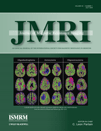Automatic glioma characterization from dynamic susceptibility contrast imaging: Brain tumor segmentation using knowledge-based fuzzy clustering†
Presented in part at the International Society for Magnetic Resonance in Medicine, May 19–25, 2007, Berlin, Germany. (abstract 1458)
Abstract
Purpose
To assess whether glioma volumes from knowledge-based fuzzy c-means (FCM) clustering of multiple MR image classes can provide similar diagnostic efficacy values as manually defined tumor volumes when characterizing gliomas from dynamic susceptibility contrast (DSC) imaging.
Materials and Methods
Fifty patients with newly diagnosed gliomas were imaged using DSC MR imaging at 1.5 Tesla. To compare our results with manual tumor definitions, glioma volumes were also defined independently by four neuroradiologists. Using a histogram analysis method, diagnostic efficacy values for glioma grade and expected patient survival were assessed.
Results
The areas under the receiver operator characteristics curves were similar when using manual and automated tumor volumes to grade gliomas (P = 0.576–0.970). When identifying a high-risk patient group (expected survival <2 years) and a low-risk patient group (expected survival >2 years), a higher log-rank value from Kaplan-Meier survival analysis was observed when using automatic tumor volumes (14.403; P < 0.001) compared with the manual volumes (10.650–12.761; P = 0.001–0.002).
Conclusion
Our results suggest that knowledge-based FCM clustering of multiple MR image classes provides a completely automatic, user-independent approach to selecting the target region for presurgical glioma characterization J. Magn. Reson. Imaging 2009;30:1–10. © 2009 Wiley-Liss, Inc.




